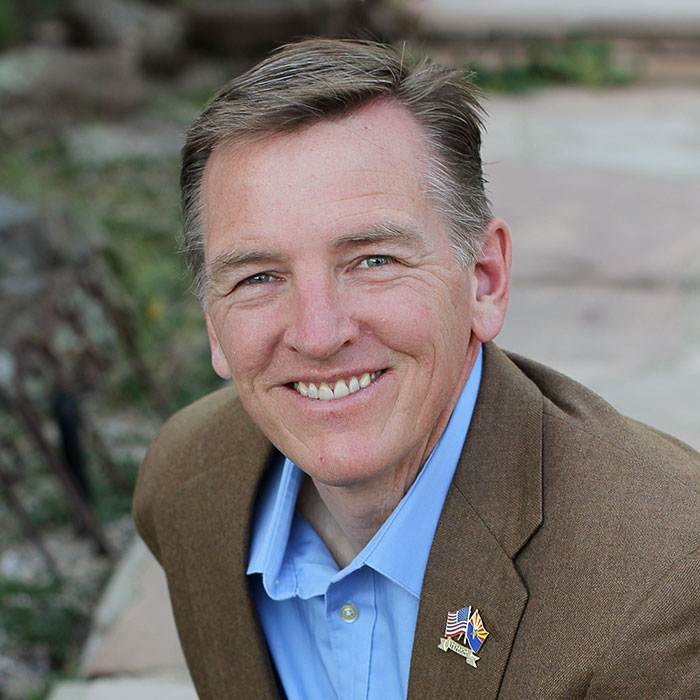Weekly Columns and Op-Eds
Weekly Column from Congressman Gosar “Forest Management and the Wallow Fire: First, Do No Harm”
Washington, DC,
November 17, 2011
|
26-May-11
Weekly Column from Congressman Gosar “Forest Management and the Wallow Fire: First, Do No Harm” By, Congressman Paul Gosar (AZ-01) 732 Words As a doctor, I abide by the Hippocratic Oath that starts with: “First, do no harm.” If only our Federal Government had to live by that principle, the wildfires raging across Arizona may have been preventable and certainly would not have grown into the disaster that our state is currently facing. I write about the Wallow Fire and our forest management situation with sadness, anger and resolve. As I’m sure everyone is right now, I am deeply concerned for the communities in danger and my thoughts and prayers are with everyone who has suffered from this terrible tragedy. I would also like to express my most sincere appreciation to all of the men and women working around the clock to protect the lives and property of our neighbors. That being said, it is absolutely vital that we learn from these events and identify ways to minimize the damage caused by future wildfires. There were plenty of warning signs that went unnoticed. Bureaucratic red tape that has kept the private sector from participating in the stewardship of our public lands, combined with the extortion tactics of some environmental groups, has resulted in the loss of Arizona’s timber industry and the jobs provided by the responsible management of our natural resources. According to the Bureau of Land Management “the forests of today consist of dense stands of 75 to 100 year-old trees with heavy fuel loading on the forest floor. Under these conditions, the forests are vulnerable to catastrophic fires.” When Arizona’s timber industry was thriving, we didn’t see such dangerous fuel densities. People are beginning to take notice of this. Plans to reduce forest floor fuel loads like the Four Forest Restoration Initiative (4FRI), which is a large acreage landscaping project endorsed by private industry and many environmental groups, have been proposed, but the government’s lack of support, postponement of timelines, and lack of consideration for fire thresholds and financial investments are dooming us to repeat history at the expense of our environment and our natural resources. Now let’s look at when the largest fires in Arizona history have occurred: The five largest wildfires, including now the Wallow Fire, which is the second largest but gaining on the Rodeo/Chediski fire of 2002, which burned 468,628 acres, have all occurred in the last ten years. Rodeo in 2002, Cave Creek in 2005, Willow in 2004, Aspen in 2003, and now the Wallow Fire which at of the time of this writing was 389,800 acres. Prior to 1990, the largest fire was the Carrizo fire in 1970 which burned just 57,000 acres. The frequency of fires, and the magnitude of the acreage burned, has increased markedly since 1990. There is likely a link between the magnitude of recent wildfires and the lawsuits that essentially shut down our logging industry in Arizona in the 1990’s. Unfortunately, the entire habitat that was supposedly preserved by these lawsuits, and all of the endangered species protected, are now roasted. The failure to allow logging and fuel thinning has led to the extreme accumulation of forest fuels. This in turn leads to the incredibly large wildfires we have seen in Arizona in recent years. I will be reviewing our NEPA regulations and other laws to see if we can change them to make the process more streamlined, efficient and fair. I am also reviewing legislation that would cap legal fees paid to environmental groups who sue government agencies. Believe it or not, environmental groups sue federal agencies, tie up the process for years, and then submit a bill to the taxpayers who end up paying under the somewhat misnamed Equal Access to Justice Act. Either way, we all pay. We pay with our taxes and we pay with lost jobs, or we pay with the ravages of a wildfire. I remain saddened by what is happening to our and friends and neighbors that have been adversely affected by this fire. Thousands of people have been evacuated. Thousands of firefighters are risking life and limb. We can resolve to keep this from happening again. I, like most of you, embrace my stewardship with nature, but that stewardship should include private sector solutions that use the natural resources of our forests in a way that maintain their beauty and vitality. Only in that manner can we say that the government, through its regulations, with and through its people, will “do no harm.” ### |
